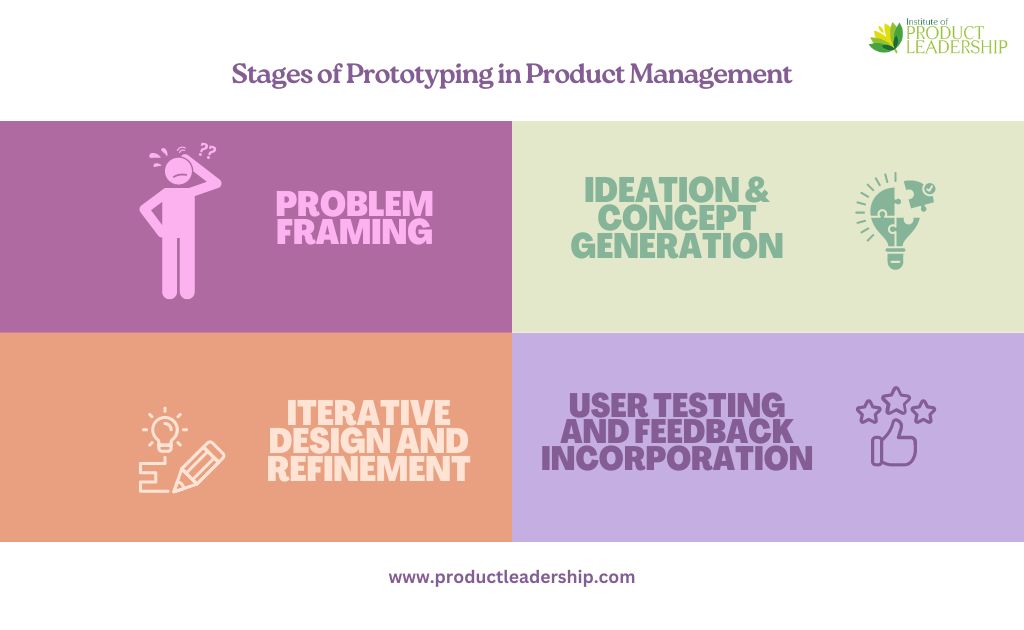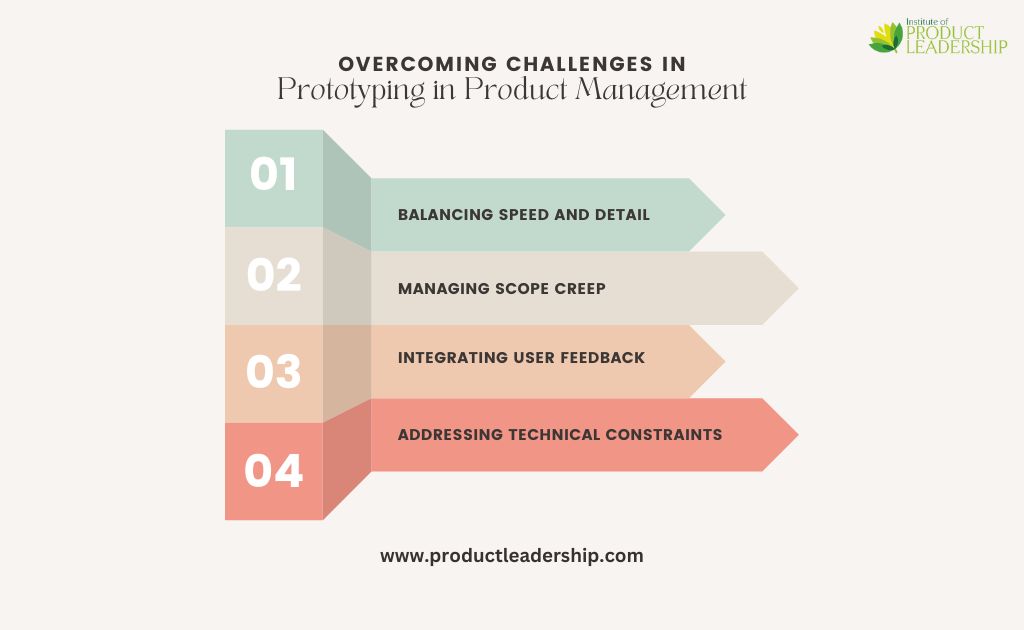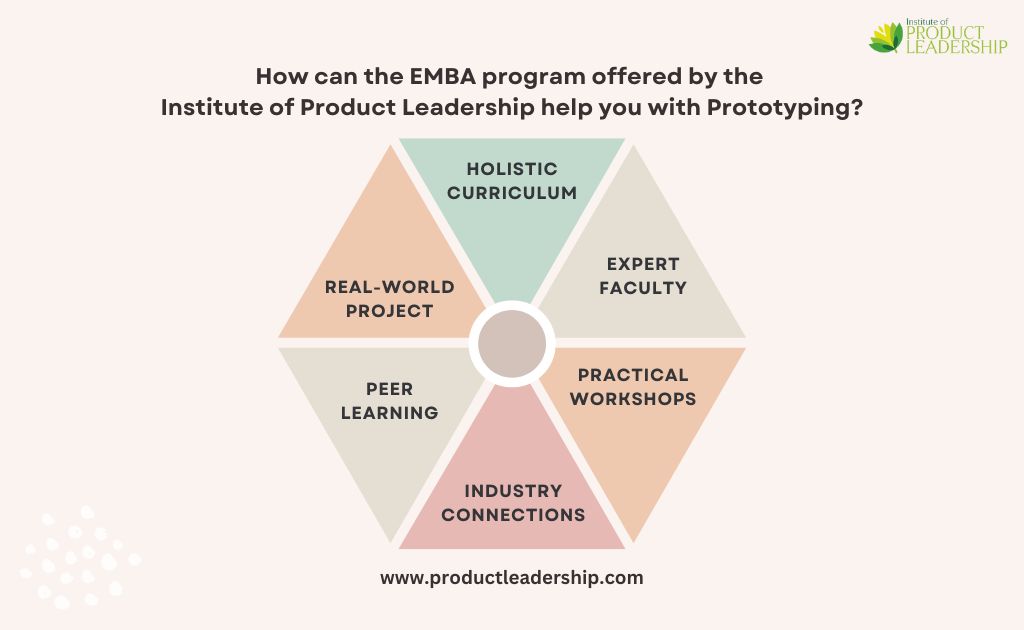The Ultimate Guide to The Art of Prototyping in Product Management
- product management
- 5 min read
In the fast-paced realm of product management, the ability to bridge the gap between ideas and tangible solutions is a defining trait. This skill finds its zenith in the art of prototyping. More than just a mere stage in the development process, prototyping is a dynamic practice that empowers product managers and leaders to iterate, innovate, and align their vision with user needs. In this blog, we will delve deep into the heart of prototyping within the context of product management to uncover how the art of prototyping serves as a pivotal compass in the quest to create exceptional products.
Key Takeaways:
- Prototyping is a dynamic practice in product management, creating preliminary models to test and validate concepts.
- Here we will delve into the role of prototyping in Product Management, and how each stage and type contributes to refining product trajectory.
- This blog also explores the benefits, challenges, and future trends that could refine product experiences.
What is Prototyping?
Prototyping is a dynamic process central to product development and innovation. It involves creating a preliminary model or version of a product, system, or application to test and validate concepts. Prototypes serve as tangible representations, enabling designers, engineers, and stakeholders to visualize, interact with, and assess the functionality and design of the end product. These iterations help identify flaws, refine features, and gather valuable user feedback early in the development cycle. Prototyping minimizes risks, reduces costs, and ensures the eventual creation of a more user-centered, effective, and successful final product by allowing experimentation and adjustments before final production.
What is Prototyping in Product Management?
Prototyping, in the realm of product management, transcends visual representation and gets multidimensional. It’s a process that crafts a tangible journey for users, stakeholders, and teams, and creates preliminary versions of a product to visualize concepts, validate assumptions, and gather user feedback. It’s a dynamic tool that allows product managers to iteratively design, refine, and enhance their ideas before investing substantial resources into full-scale development. Prototypes can range from low-fidelity sketches to interactive simulations, enabling effective communication with stakeholders and aligning development with user needs.
Why Do We Need a Prototype?
Prototypes are indispensable in product management as they offer a tangible glimpse into the envisioned product’s functionality and user experience. They bridge the gap between abstract concepts and real-world solutions, allowing product teams to validate assumptions, gather early user feedback, and refine designs iteratively. Prototyping minimizes the risk of investing resources in misguided directions and aligns development with user needs. By fostering clearer communication among stakeholders and cross-functional teams, prototypes streamline decision-making and enhance collaboration. Ultimately, prototypes mitigate uncertainties, accelerate innovation, and serve as a critical tool in crafting successful, user-centered products.
The Stages of Prototyping in Product Management
Prototyping within the realm of product management unfolds as a multistage journey, each phase contributing to the refinement of a product’s trajectory. Let’s delve into these stages:
- Problem Framing: The genesis of effective prototyping lies in a clear understanding of the problem at hand. Product managers and leaders must define the pain points their product aims to address. This stage sets the stage for a focused prototyping process by ensuring alignment with user needs.
- Ideation and Concept Generation: Assembling a diverse team for brainstorming sessions generates a rich pool of ideas. These concepts, though abstract, can be brought to life through prototyping. The process of ideation thrives on the ability to tangibly explore and iterate upon these nascent ideas.
- Iterative Design and Refinement: At the heart of prototyping beats iteration, a cycle of refining and enhancing prototypes based on user feedback. Product managers and leaders use this stage to sculpt their prototypes, molding them closer to the envisioned solution with each iteration.
- User Testing and Feedback Incorporation: Prototypes find their true purpose during user testing. Real users interact with these models, offering insights that can guide improvements. This stage is akin to a conversation between the prototype and its users, an exchange that fuels refinement.
Types of Prototypes in Product Management
In the dynamic domain of product management, where ideas evolve into innovations, various types of prototypes serve as vessels for creativity and validation, which include:
- Low-Fidelity Prototypes: Often the starting point, low-fidelity prototypes are quick sketches or paper mockups. They’re invaluable for exploring initial ideas and concepts without investing extensive time or resources. These rudimentary visualizations offer a tangible representation of abstract thoughts.
- Wireframes and Mockups: As concepts take shape, wireframes and mockups step in. These digital representations offer more detailed views of the user interface. Product managers and leaders can leverage tools to craft visual blueprints, enhancing collaboration with designers and developers.
- Interactive Prototypes: Moving beyond static representations, interactive prototypes invite users to interact with the product’s features. These mockups mimic user interactions, giving stakeholders a feel for the user experience and enabling valuable user feedback early in the process.
- Physical Prototypes: Particularly relevant in industries like industrial design and hardware development, physical prototypes materialize concepts into tangible forms. They offer a hands-on experience, aiding in understanding product ergonomics and functionality.
- Digital Simulations: For complex systems or scenarios, digital simulations go beyond individual interactions. These advanced prototypes simulate real-world scenarios, allowing product managers and leaders to test and validate intricate functionalities and user journeys.
Benefits of Prototyping in Product Management
Prototyping emerges as a cornerstone in the dynamic landscape of product management, offering a plethora of advantages that redefine how products are conceptualized, developed, and brought to market. These benefits include:
- Faster Validation: The power to swiftly validate ideas is one of prototyping’s chief merits. It allows product managers and leaders to gauge the viability of concepts before committing extensive resources, saving time and costs.
- Improved Communication: Visual prototypes transcend linguistic barriers, enabling clearer communication among cross-functional teams and stakeholders by offering a tangible representation, prototypes facilitate a shared understanding of the product’s vision.
- Enhanced User Engagement: Through interactive prototypes, users can experience the product’s features firsthand. This engagement fosters a sense of ownership and investment, leading to more insightful feedback and a product that better aligns with user expectations.
- Risk Mitigation: Prototyping serves as an early warning system against potential pitfalls. Identifying design flaws, technical challenges, and usability issues in the prototype stage allows for corrective measures before they become costly setbacks.
- Iterative Improvement: The iterative nature of prototyping dovetails seamlessly with the development process. The constant cycle of creating, testing, and refining prototypes ensures that the final product is a culmination of well-honed iterations.
Tools and Resources for Prototyping in Product Management
In the digital era, where innovation thrives on technology, a plethora of tools and resources have emerged to support product managers and leaders in their prototyping endeavors. These tools include:
- Wireframing Tools: Platforms like Sketch, Balsamiq, and Axure empower product managers and leaders to create low-fidelity wireframes. These tools simplify the process of sketching out initial concepts and ideas.
- Mockup Tools: Adobe XD, Sketch, and Figma offer advanced mockup capabilities, allowing for detailed visual representations of user interfaces. These tools facilitate collaboration with designers and developers.
- Prototyping Software: InVision, Proto.io and Marvel usher in the era of interactive prototypes. These platforms enable product managers and leaders to craft prototypes that simulate user interactions and experiences, gathering valuable feedback.
- 3D Printing and Physical Prototyping Tools: For industries involving hardware or industrial design, tools like Tinkercad and SolidWorks support the creation of physical prototypes. These tools translate digital concepts into tangible models.
Overcoming Challenges in Prototyping
While prototyping is a transformative tool, it’s not without its challenges. The techniques help product managers and leaders navigate these hurdles to maximize the benefits of the prototyping process, include:
- Balancing Speed and Detail: The quest for rapid prototyping can sometimes compromise the depth of detail. Product managers and leaders must strike a balance by focusing on the key features and interactions that matter most.
- Managing Scope Creep: Prototyping, if unchecked, can expand beyond its initial scope. Vigilance is required to ensure that prototypes remain aligned with the intended objectives, preventing unnecessary complexity.
- Integrating User Feedback: While user feedback is invaluable, managing and integrating a deluge of feedback can be overwhelming. Prioritization is key, focus on feedback that aligns with the core objectives of the prototype.
- Addressing Technical Constraints: In a world of limitless ideas, technical limitations can be frustrating. However, these constraints often fuel innovation. Embrace them as opportunities to think creatively and find novel solutions.
Prototyping in Real-World Scenarios
The true test of prototyping’s prowess lies in its application across diverse industries and real-world scenarios, which include:
- Tech and Digital Products: In the fast-paced world of technology, prototyping plays a pivotal role in the development of software and apps. Iterative design and user testing through interactive prototypes ensure that digital products resonate with users.
- Consumer Goods and Packaging: Prototyping transforms how consumer goods are designed, ensuring that packaging is not only functional but also user-friendly. Physical prototypes allow for hands-on evaluation of packaging aesthetics and usability.
- Healthcare and Medical Devices: The healthcare sector benefits from prototyping’s precision. Prototypes of medical devices allow for testing in controlled environments before deployment, enhancing safety and efficacy.
- Automotive and Industrial Design: In the realm of automotive and industrial design, physical prototypes are crucial. They enable engineers to fine-tune ergonomics, test mechanical functionalities, and optimize the user experience.
Future Trends in Prototyping
The future trends that are set to redefine how products are conceptualized, developed, and brought to market, include:
- Virtual and Augmented Reality (VR/AR): The immersive experiences offered by VR and AR are revolutionizing prototyping. Product managers and leaders can create virtual prototypes that users can interact with in simulated environments, providing a deeper understanding of the product’s potential.
- AI in Prototyping: Artificial Intelligence is becoming a valuable asset in generating prototypes. AI algorithms can analyze user data, market trends, and design principles to create initial prototypes, accelerating the ideation process.
- Collaboration Tools: Remote work and global teams demand advanced collaboration tools. Prototyping platforms will continue to evolve to facilitate seamless remote collaboration, allowing teams to work together on prototypes regardless of their physical location.
How can the EMBA program offered by the Institute of Product Leadership help you with prototyping?
The Executive MBA (EMBA) program offered by the Institute of Product Leadership is a transformative educational experience designed to equip professionals with the skills, knowledge, and insights necessary to excel in the dynamic landscape of product management and leadership. Within this comprehensive program, there are numerous ways in which you can learn about prototyping and its significance:
- Holistic Curriculum: The EMBA program’s curriculum is carefully crafted to encompass every facet of product management and leadership, including prototyping. You’ll delve into the principles, techniques, and best practices of prototyping as part of a broader exploration of innovation, user-centric design, and effective communication.
- Expert Faculty: The program is led by seasoned industry professionals who bring real-world experience to the classroom. Faculty members, who are thought leaders in product management, will guide you through the intricacies of prototyping, sharing insights, case studies, and practical applications.
- Practical Workshops: The EMBA program at the Institute of Product Leadership emphasizes hands-on learning. Workshops and interactive sessions dedicated to prototyping allow you to engage directly with the process. From creating low-fidelity prototypes to crafting interactive mockups, you’ll gain practical skills that you can apply immediately in your professional journey.
- Industry Connections: The Institute of Product Leadership boasts a strong network of industry partnerships and collaborations. This network provides opportunities for you to connect with professionals from various sectors, gaining insights into how prototyping is employed across industries and learning from their experiences.
- Peer Learning: Learning from peers who come from diverse backgrounds and industries enriches your understanding of prototyping. Group discussions, case analyses, and collaborative projects foster an environment where you can exchange ideas and learn from one another’s perspectives.
- Real-World Projects: The program often incorporates real-world projects that require you to apply prototyping techniques to solve practical challenges. These projects offer a platform to refine your prototyping skills in a professional context.
The EMBA program offered by the Institute of Product Leadership provides a holistic and immersive learning experience that covers all aspects of product management, including prototyping. Through expert faculty, hands-on workshops, industry connections, peer learning, and real-world projects, you’ll not only understand the significance of prototyping but also develop the skills to effectively integrate it into your product management toolkit.
Frequently Asked Questions
Prototyping offers several benefits, including faster validation of ideas, improved communication among teams, enhanced user engagement, risk mitigation by identifying flaws early, and the ability to iteratively improve the product based on feedback.
Different types of prototypes include low-fidelity sketches, wireframes, interactive prototypes, physical prototypes, and digital simulations. These prototypes cater to different aspects of design, functionality, and user experience.
Prototyping finds applications across diverse industries such as technology, consumer goods, healthcare, automotive, and industrial design. It plays a crucial role in refining products, optimizing user experiences, and testing innovative concepts.
Interactive prototypes go beyond static representations by allowing users to interact with the product’s features. This mimics real user interactions and provides valuable insights into the user experience early in the development process.
Yes, prototyping is applicable to non-digital products as well. For industries like industrial design and automotive, physical prototypes can be created to test functionality, ergonomics, and user experience in tangible forms.










